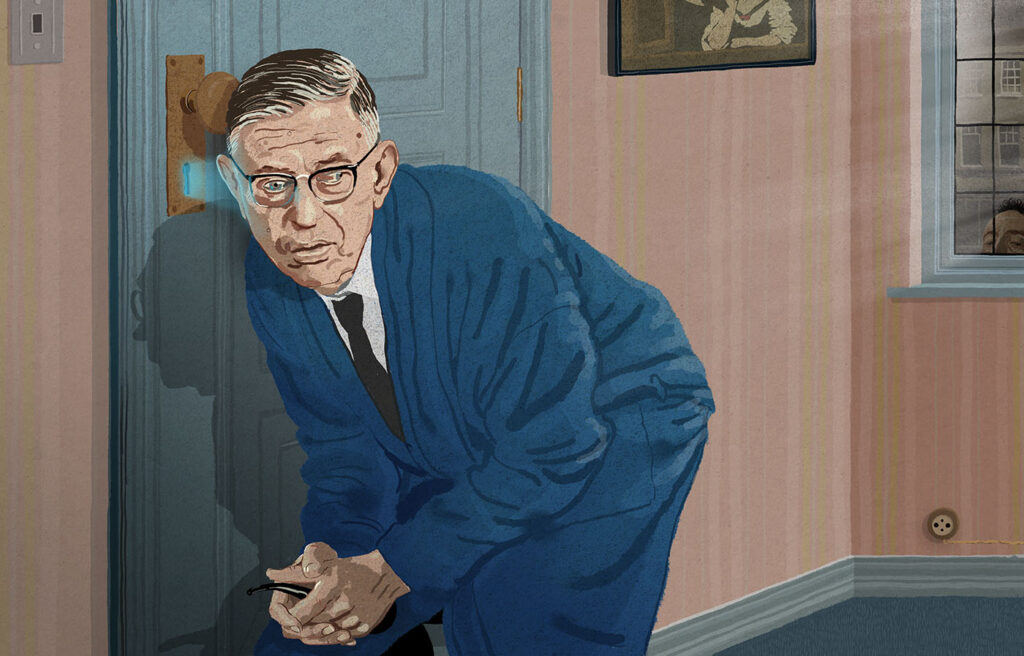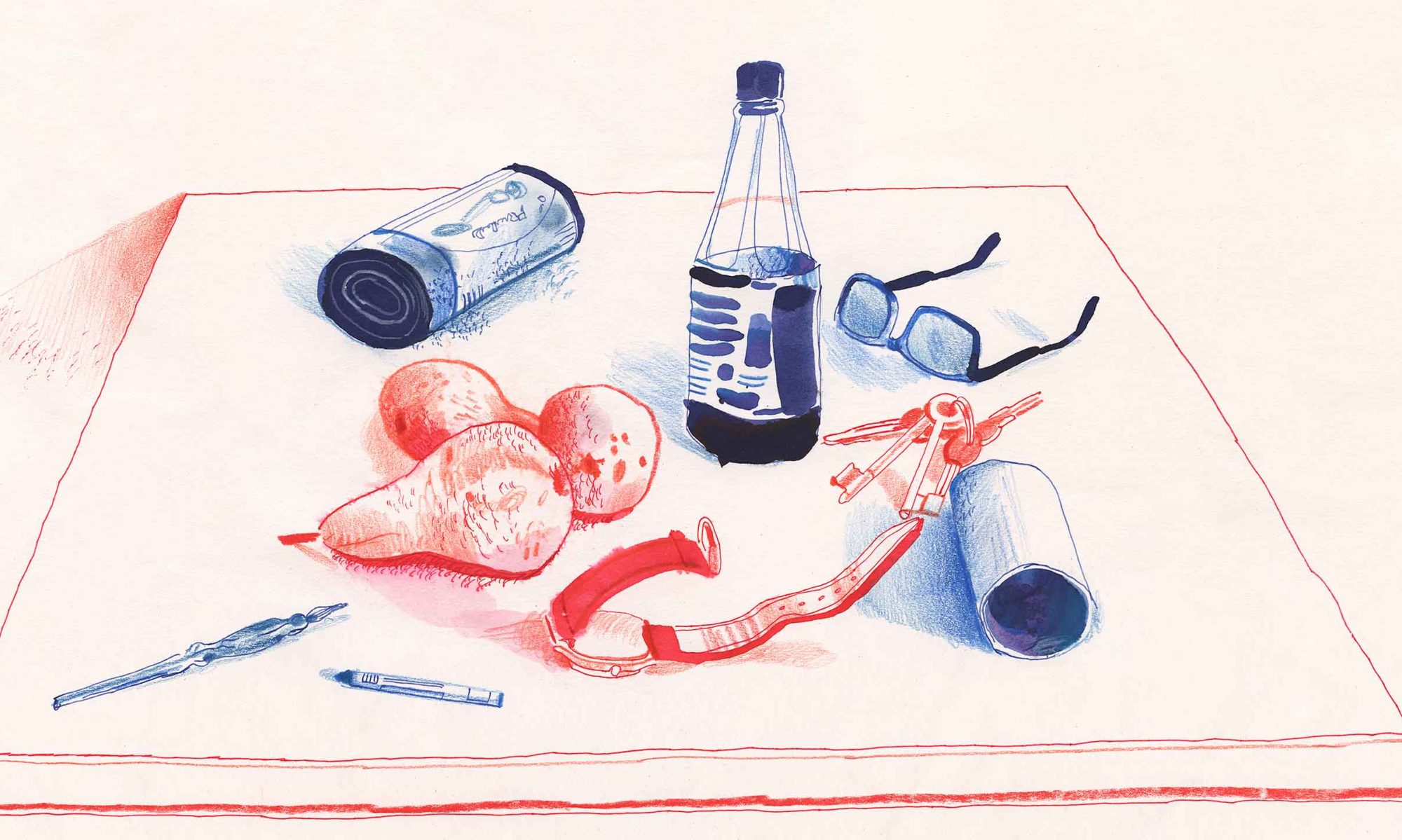
Sartre makes the shift from self to other.
Greg Artus writes in issue 145 of Philosophy Now: “Sartre’s famous illustration of the Look is his example of the jealous lover. Suppose I am a lover who, for whatever reason, is consumed with jealousy about my lover’s activities, and so I’m spying on her through a keyhole. I am completely immersed in what I’m doing. My attention is focussed entirely outside of myself on the task in hand, and I’m not thinking about me but about the object of my attention. I am entirely unreflective; I’m just doing. In this mode, I am what Sartre calls a body-for-itself – a physically embodied doer, immersed totally in its active engagement with the concrete world of activity, focussed only on the purposes to hand.
But then I notice that someone – some Other – is watching me as I spy on my lover. This Look of the Other snaps me out of my immersion and forces to me to see myself from the outside, so to speak. Under this withering Look of the Other, I am brought face to face with the fact of what I’m doing and how it must look to Others. Now I am no longer focussed outwardly on my task, but am focussed inwardly, on myself, viewing myself and my actions as another might view me. I am no longer focussed on my lover, but reflecting upon what I am doing and how it looks. Thus I become what Sartre calls a body-for-Others; an engaged body that is an object of scrutiny and evaluation by another body-for-itself-an Other who is engrossed in watching me as I watch my lover.”
